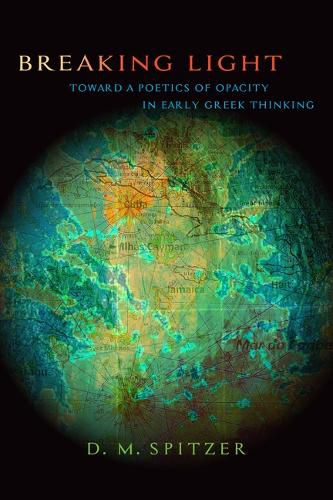Readings Newsletter
Become a Readings Member to make your shopping experience even easier.
Sign in or sign up for free!
You’re not far away from qualifying for FREE standard shipping within Australia
You’ve qualified for FREE standard shipping within Australia
The cart is loading…






Discloses the ways in which opacity and relation in the thought of Thales, Anaximandros, and Anaximenes depart from the predominant understanding of philosophy as clarity.
In Breaking Light D. M. Spitzer discloses the ways in which opacity and relation orient the thought of Thales, Anaximandros, and Anaximenes. In so doing, Breaking Light departs from a predominant understanding of philosophy as constituted by the principle of clarity-a principle already operative in Plato's and Aristotle's interpretations of the shadowy figures from the Greek east identified as the first philosophers, the Milesians. Drawing on opacity and relation as articulated by Martinican thinker Edouard Glissant and enhanced by the insights of Martin Heidegger and contemporary feminisms in the (trans-)continental tradition(s), Breaking Light lets the central terms orienting Milesian thinking-????, ???????, ???-radiate with the energies of provisionality, uncertainty, and abundance-of opacity. A comparative approach attends to figures like Pherekydes and texts from Egypt and the Near East that are understudied in the continental traditions.
$9.00 standard shipping within Australia
FREE standard shipping within Australia for orders over $100.00
Express & International shipping calculated at checkout
Stock availability can be subject to change without notice. We recommend calling the shop or contacting our online team to check availability of low stock items. Please see our Shopping Online page for more details.
Discloses the ways in which opacity and relation in the thought of Thales, Anaximandros, and Anaximenes depart from the predominant understanding of philosophy as clarity.
In Breaking Light D. M. Spitzer discloses the ways in which opacity and relation orient the thought of Thales, Anaximandros, and Anaximenes. In so doing, Breaking Light departs from a predominant understanding of philosophy as constituted by the principle of clarity-a principle already operative in Plato's and Aristotle's interpretations of the shadowy figures from the Greek east identified as the first philosophers, the Milesians. Drawing on opacity and relation as articulated by Martinican thinker Edouard Glissant and enhanced by the insights of Martin Heidegger and contemporary feminisms in the (trans-)continental tradition(s), Breaking Light lets the central terms orienting Milesian thinking-????, ???????, ???-radiate with the energies of provisionality, uncertainty, and abundance-of opacity. A comparative approach attends to figures like Pherekydes and texts from Egypt and the Near East that are understudied in the continental traditions.